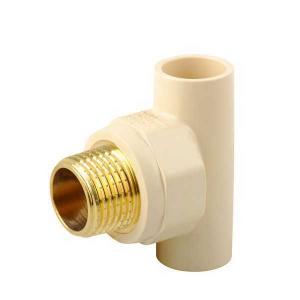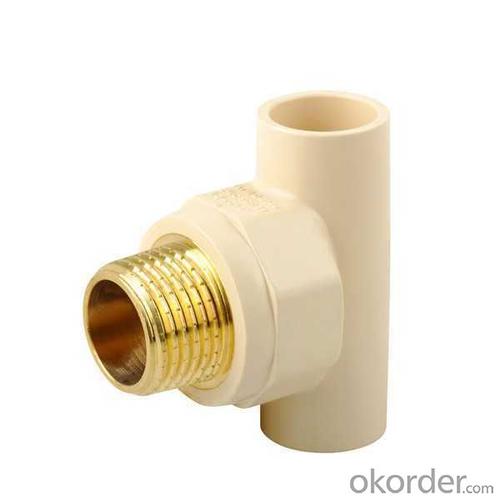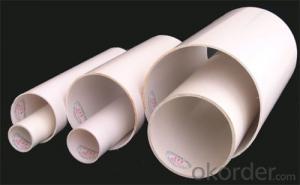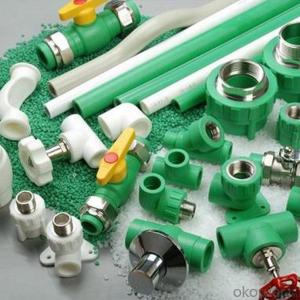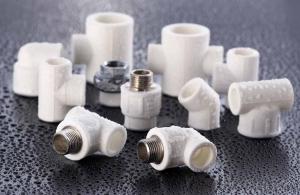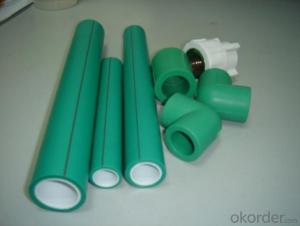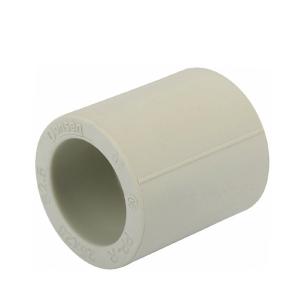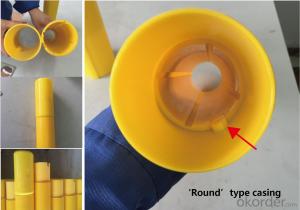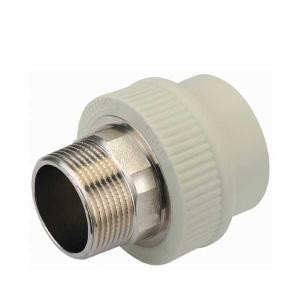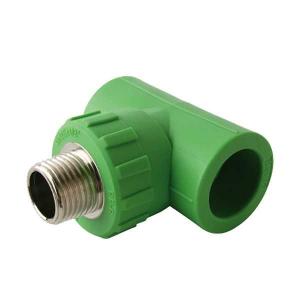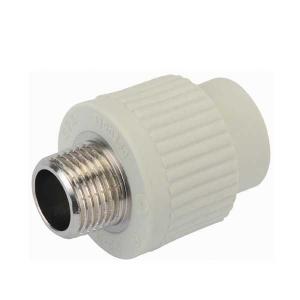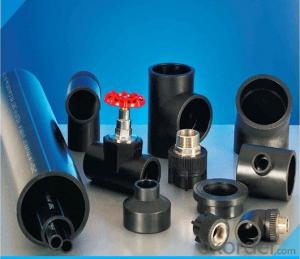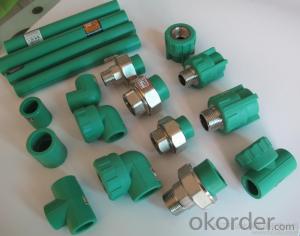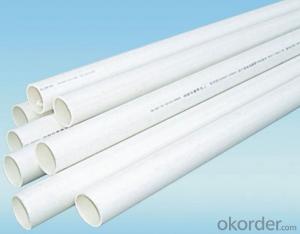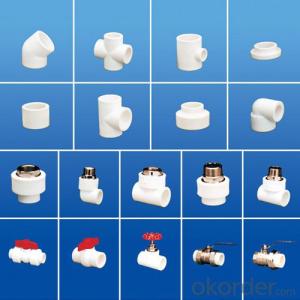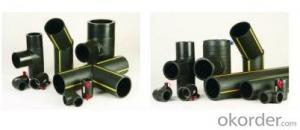1 1/2 Plastic Pipe Fittings High Quality Male Tee Brass Threaded
- Loading Port:
- Ningbo
- Payment Terms:
- TT or LC
- Min Order Qty:
- 1000 watt
- Supply Capability:
- 100000 watt/month
OKorder Service Pledge
Quality Product, Order Online Tracking, Timely Delivery
OKorder Financial Service
Credit Rating, Credit Services, Credit Purchasing
You Might Also Like
 cpvc plastic fittings raw materials from KANEKA japan laser marking high rigidity easy installation corrosion-resistant PN25 ASTM2846 standard size:1/2*1/2''--1*1/2''
cpvc plastic fittings raw materials from KANEKA japan laser marking high rigidity easy installation corrosion-resistant PN25 ASTM2846 standard size:1/2*1/2''--1*1/2''
1.Material:Random Polypropylene(Hyosung R200P);
2.ISO9001&ISO14001;
3.Standard:GB/T 18742.3-2002, DIN8077/8078;
4.OEM also ok
- Q: What are the common failure modes of plastic pipe fittings?
- Some common failure modes of plastic pipe fittings include leaks, cracks, and joint failures. These can occur due to factors such as excessive pressure, thermal expansion/contraction, chemical degradation, improper installation, or poor quality materials.
- Q: Are plastic pipe fittings suitable for both residential and commercial applications?
- Yes, plastic pipe fittings are suitable for both residential and commercial applications. They are commonly used in both settings due to their durability, affordability, and ease of installation. Additionally, plastic pipe fittings are resistant to corrosion and chemicals, making them a reliable choice for various plumbing needs in both residential and commercial buildings.
- Q: How do plastic pipe fittings handle thermal expansion and contraction?
- Plastic pipe fittings are designed to handle thermal expansion and contraction through their flexibility. They have the ability to expand and contract with changes in temperature, which helps prevent stress and damage to the pipes. Additionally, certain plastic materials used in pipe fittings have low thermal conductivity, which helps to minimize the transfer of heat and further reduce the effects of thermal expansion and contraction.
- Q: How do plastic pipe fittings handle abrasive fluids?
- Plastic pipe fittings are generally not recommended for handling abrasive fluids as they may be prone to wear and erosion. Metal pipe fittings, such as those made from stainless steel or brass, are more suitable for handling abrasive fluids as they offer better durability and resistance to wear.
- Q: What is the maximum temperature that plastic pipe fittings can handle?
- The maximum temperature that plastic pipe fittings can handle depends on the type of plastic used. Generally, PVC (polyvinyl chloride) pipe fittings can handle temperatures up to 140°F (60°C), while CPVC (chlorinated polyvinyl chloride) fittings can withstand higher temperatures up to 200°F (93°C). However, it is important to consult the manufacturer's specifications for the specific type of plastic fitting being used to ensure it is suitable for the desired temperature range.
- Q: Are plastic pipe fittings suitable for use in hospitals and laboratories?
- Yes, plastic pipe fittings are suitable for use in hospitals and laboratories. They are commonly used due to their durability, resistance to corrosion, and ability to withstand high-pressure environments. Additionally, plastic pipe fittings are lightweight, cost-effective, and can be easily sterilized, making them a practical choice for these settings.
- Q: Can plastic pipe fittings be used for industrial waste systems?
- Yes, plastic pipe fittings can be used for industrial waste systems. Plastic pipe fittings are commonly used in industrial applications due to their durability, corrosion resistance, and ability to handle various types of waste materials. Additionally, plastic fittings are typically easier to install and maintain compared to traditional metal fittings, making them a cost-effective and efficient choice for industrial waste systems.
- Q: How do you connect plastic pipe fittings to CPVC pipes?
- To connect plastic pipe fittings to CPVC pipes, you can use solvent cement specifically designed for CPVC. First, ensure that both the plastic pipe fittings and CPVC pipes are clean and free from any dirt or debris. Apply the CPVC solvent cement to both the fitting and pipe, making sure to coat the entire area that will be joined. Then, quickly insert the fitting into the CPVC pipe, giving it a slight twist to ensure a secure connection. Allow the solvent cement to dry as per the manufacturer's instructions before applying any pressure or using the connected pipes.
- Q: Do plastic pipe fittings require any special supports or hangers?
- Yes, plastic pipe fittings typically require special supports or hangers to ensure proper installation, stability, and to prevent sagging or stress on the pipes. These supports or hangers are designed to securely hold the pipes in place, maintain alignment, and distribute the weight evenly.
- Q: Plastic pipe connections commonly used in several ways?
- Welding methods are mainly used for polyolefin pipes such as LDPE, HDPE and PP tubes. Welding, the technical requirements of the operation is relatively high, relatively less application.
Send your message to us
1 1/2 Plastic Pipe Fittings High Quality Male Tee Brass Threaded
- Loading Port:
- Ningbo
- Payment Terms:
- TT or LC
- Min Order Qty:
- 1000 watt
- Supply Capability:
- 100000 watt/month
OKorder Service Pledge
Quality Product, Order Online Tracking, Timely Delivery
OKorder Financial Service
Credit Rating, Credit Services, Credit Purchasing
Similar products
Hot products
Hot Searches
Related keywords
